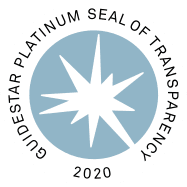The federal regulatory colossus reaches into virtually every aspect of Americans’ lives via a number of murky programs and actions that will continue to hinder economic growth if left in place.
Clyde Wayne Crews of the Competitive Enterprise Institute refers to such government actions as “regulatory dark matter.” Like the difficult-to-detect and virtually invisible dark matter of the universe, regulatory dark matter consists of bureaucratic activities that fall outside the purview of the Administrative Procedures Act (APA), which specifies the formal process that must be followed to issue regulations.
This process includes notifying the public of proposed rulemaking, providing the opportunity for public input and comment before a final rule is published in the Federal Register, and adhering to a 30-day hiatus before the rule becomes effective.
However, those requirements do not apply to “interpretative rules, general statements of policy, or rules of agency organization, procedure, or practice,” or to “the thousands of executive branch and federal agency proclamations and issuances, including guidance documents, memoranda, bulletins, circulars, and letters that carry practical (if not always technically legally) binding regulatory effect,” Crews writes.
And as agencies churn these out, in Crews’s words, even “without Congress actually passing a law or an APA-compliant legislative rule or regulation being issued, the federal government increasingly injects itself into our states, our communities, and our personal lives.”
In his 50-page 2015 report on the topic, he focuses on the impact of executive orders, agency guidance documents, and regulatory notices. But the universe of agencies’ nonregulatory actions is even larger, including such things as government research programs or grants to favored researchers that may be tainted by political ideology.
FDA regulations limit competition by stopping new drugs from entering the market
Other significant examples of “regulatory creep” — pushing the envelope by inventing new regulatory requirements — abound. The Food and Drug Administration provides one example.
In 2007, a mid-level FDA official announced what amounts to a new, extra-statutory criterion for marketing approval. The law requires that in order to be marketed, a drug must simply be shown to be safe and effective. But in denying approval of Merck’s new drug, Arcoxia, a COX-2 inhibitor for the relief of arthritis pain, Dr. Robert Meyer, the director of the FDA office that oversees arthritis drugs, said that the drug needed to be shown to be superior to existing drugs to merit approval.
He claimed that the agency’s advisory committee had sent a clear message that “simply having another drug on the market … didn’t seem to be sufficient reason” for approval. But whether or not the advisory committee meant to convey this message (and in any case, advisory committee recommendations are not binding), it is specious reasoning.
It’s a good idea to have similar drugs on the market
First, there are important differences between drugs that act through similar mechanisms. Different COX-2 inhibitors and statins, for example, were shown long after their initial approvals to have distinct and critical advantages and disadvantages. Physicians can select one over another, depending on how their patients respond.
Second, if two drugs are both effective in 40 percent of patients with a given symptom or disease, it may not be known whether those drugs work in the same 40 percent. Thus, if the drugs are effective in different patient populations, the failure of regulators to approve the second drug could deprive a large number of patients of access to an efficacious medicine. At best, practitioners would have fewer choices.
Third, a substantial fraction of the prescribing of many drugs ends up being different from the primary indications specified in the original approval; these subsequent uses may be either approved or off-label indications. But if the FDA won’t approve a drug for its initial indication because it is not sufficiently superior to a previously approved medicine, further testing might not be performed and other uses never discovered.
The extra-statutory superiority criterion should be explicitly repudiated by the new FDA commissioner, Scott Gottlieb, perhaps via a “clarification” in the Federal Register.
The FDA has pushed the envelope even without an actual announcement of any kind simply by creating a pattern of its actions. For example, the FDA used to require Phase Four (postmarketing) clinical trials only in rare situations to establish safety and efficacy in demographic groups such as children or pregnant women that were underrepresented in the preapproval trials.
Now, it is relatively rare for the FDA not to require Phase Four trials. This trend, which has pushed already-high drug-development costs into the stratosphere, will be hard to reverse, because regulators will say they are only “erring on the side of safety.”
Regulatory dark matter can be detrimental to the environment
Another example is the Environmental Protection Agency’s Integrated Risk Information System (IRIS), which assesses chemicals to determine whether they pose cancer or other health risks and then catalogs its findings in a database. Created by the agency itself in 1985, there is no law to define standards for IRIS risk assessments, yet myriad other EPA offices use IRIS assessments to implement and enforce laws regulating water, air, and land.
Although IRIS does employ a public comment process, the program has been mired in controversy because it often fails to produce scientifically robust assessments. In a 2011 review of IRIS’s formaldehyde assessment, for example, the National Research Council rebuked the agency, citing “recurring methodologic problems,” “problems with clarity and transparency,” and inadequate documentation of evidence and criteria, and noted that other NRC committees have reported the same issues in the past.
The NRC then detailed a series of reforms that IRIS needed to implement, but reform has been slow in coming, and IRIS continues to produce highly questionable assessments.
Unfortunately, they often provide the basis for burdensome regulations that have high costs but provide little or no public health benefits. For example, excessively stringent drinking water rules raise local government costs and eventually lead to higher taxes and inflated water bills.
Why do bureaucrats stifle innovation?
Why would the EPA, FDA, and an alphabet soup of other federal agencies adopt such dubious, anti-innovation policies? The answer is that it’s in their DNA: whenever they can, bureaucrats tend to impose new requirements, arrogate new responsibilities, and expand their empires.
Another way to create regulatory dark matter is by the president or executive branch agencies unilaterally deciding not to obey congressional mandates — that is, laws duly enacted and signed by the president.
Most often, they assert “enforcement discretion,” but such claims are dubious. Article II, Section 3 of the Constitution states that the president “shall take care that the laws be faithfully executed,” and former federal judge Michael McConnell emphasizes that “this is a duty, not a discretionary power. While the president does have substantial discretion about how to enforce a law, he has no discretion about whether to do so.”
Former FDA commissioner Andrew von Eschenbach once said that regulators should be “a bridge to the future, not a barrier to the future.” To accomplish that, politicians will need to shine a light on and extirpate the regulatory dark matter as well as formal regulations.
To read more about issues relating to new technology and innovation, be sure to check out our cluster page by clicking on the button below.
A version of this article was previously published on the Learn Liberty blog
Updated by Joseph Simnett
This piece solely expresses the opinion of the author and not necessarily the organization as a whole. Students For Liberty is committed to facilitating a broad dialogue for liberty, representing a variety of opinions. If you’re a student interested in presenting your perspective on this blog, send your piece to [email protected], and mention SFL Blog in the email subject line for your chance to be published and be seen!

















